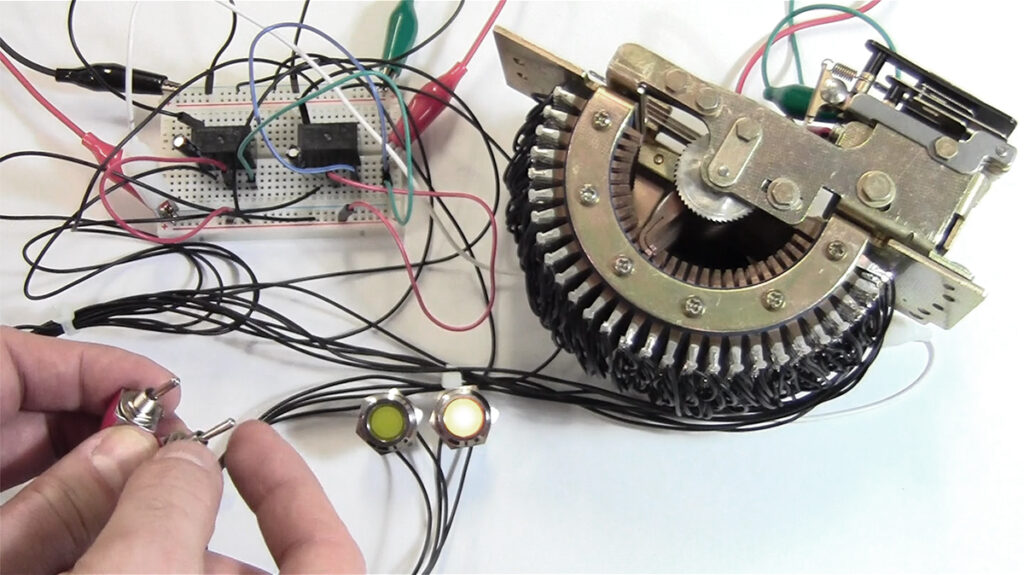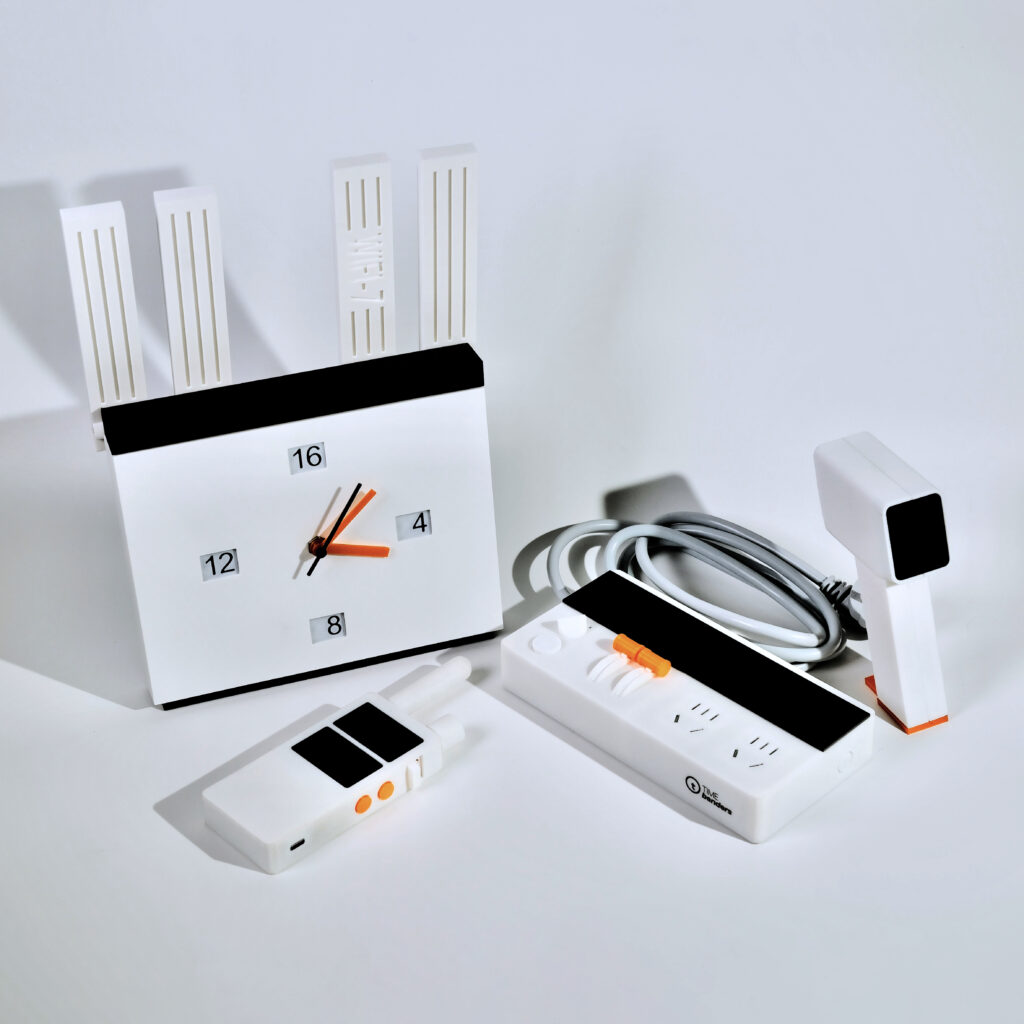While working at the Biological Computer Laboratory at the University of Illinois in the 1970s, the British cybernetician W. Ross Ashby built a minimal demonstration device that has come to be known as the Ashby Box. The device, which is now stored in the University of Illinois Archives, is housed in a 6″ by 5″ by 4″ aluminum housing. Its user interface consists of two toggle switches and two lamps. Manipulating the switches changes the on/off patterns of the lamps in a way that is unpredictable or, as Heinz von Foerster put it, “analytically undeterminable.” Observing the behavior of the device, in other words, does not allow the observer to predict how it will go on behaving. This is due to it having an internal state that changes every time its input changes, while its output is determined by both its input and the internal state, resulting in a transcomputable number of possible input-to-output relationships.

The Ashby Box is a historically significant artifact. It is the basis of Heinz von Foerster‘s distinction between trivial and non-trivial machines. This distinction, in turn, is the basis of von Foerster’s social critique of trivialization in the social domain. As is argues in the chapter below, the Ashby Box can also seen as a sister of Alan Turing‘s Turing Machine in as far as Turing proposed the Turing Machine to demonstrate the limits of deductive reasoning, whereas Ashby built the Ashby Box to demonstrate the limits of inductive reasoning.
In collaboration with Andrei Cretu of the University of Ohio, Thomas Fischer has built a speculative remake of the Ashby Box based on descriptions of its working principle and characteristics in published literature. The image below shows an unhoused remake centered around a 52-step uniselector, a rotating electromechanical switch that was common in the mid-20th century.

The implementation of the speculative remakes, along with a historical contextualization of the Ashby Box was published in the open-access chapter linked below. The Design Cybernetics Group is currently working on a contemporary re-design of the Ashby Box, which we will discuss on this blog in due course.
Reference


